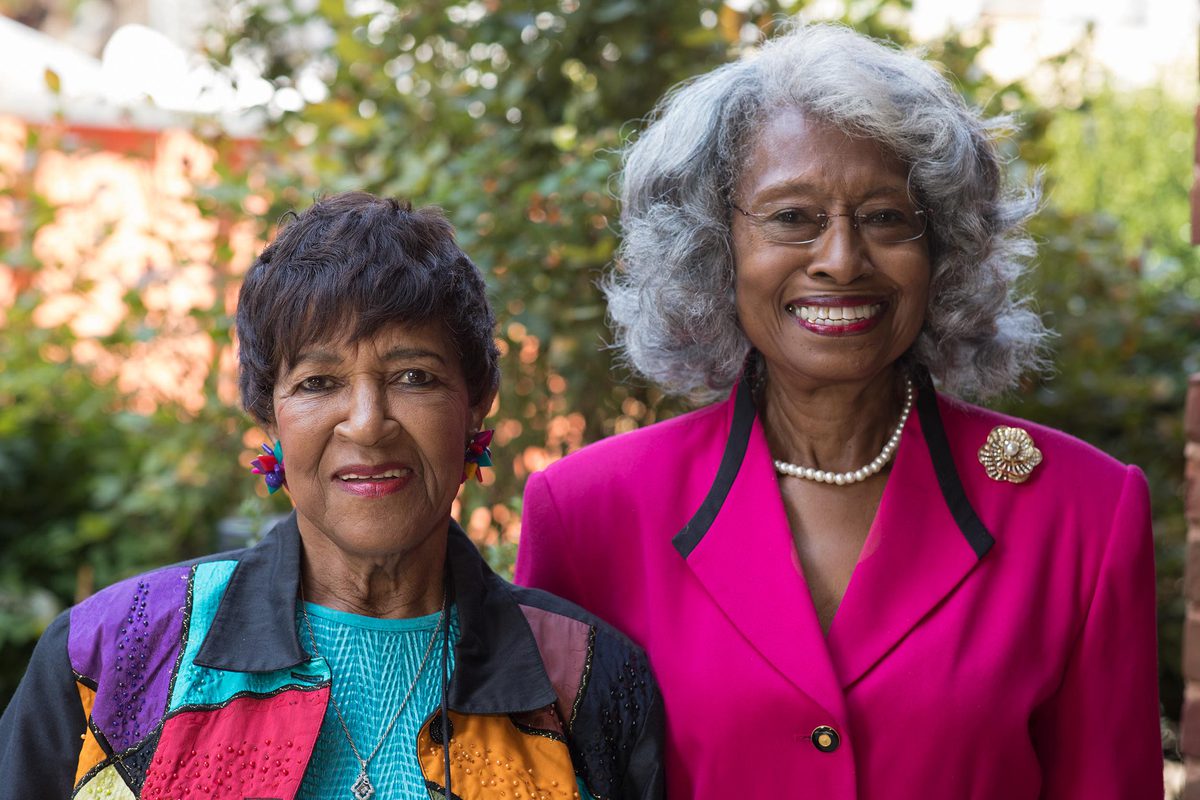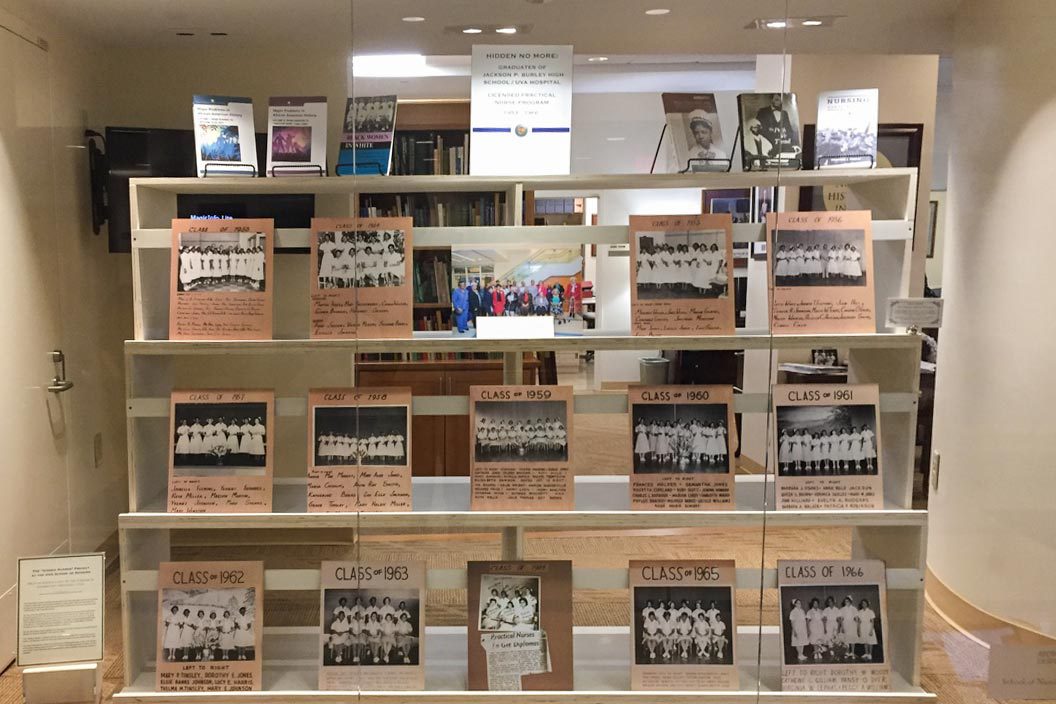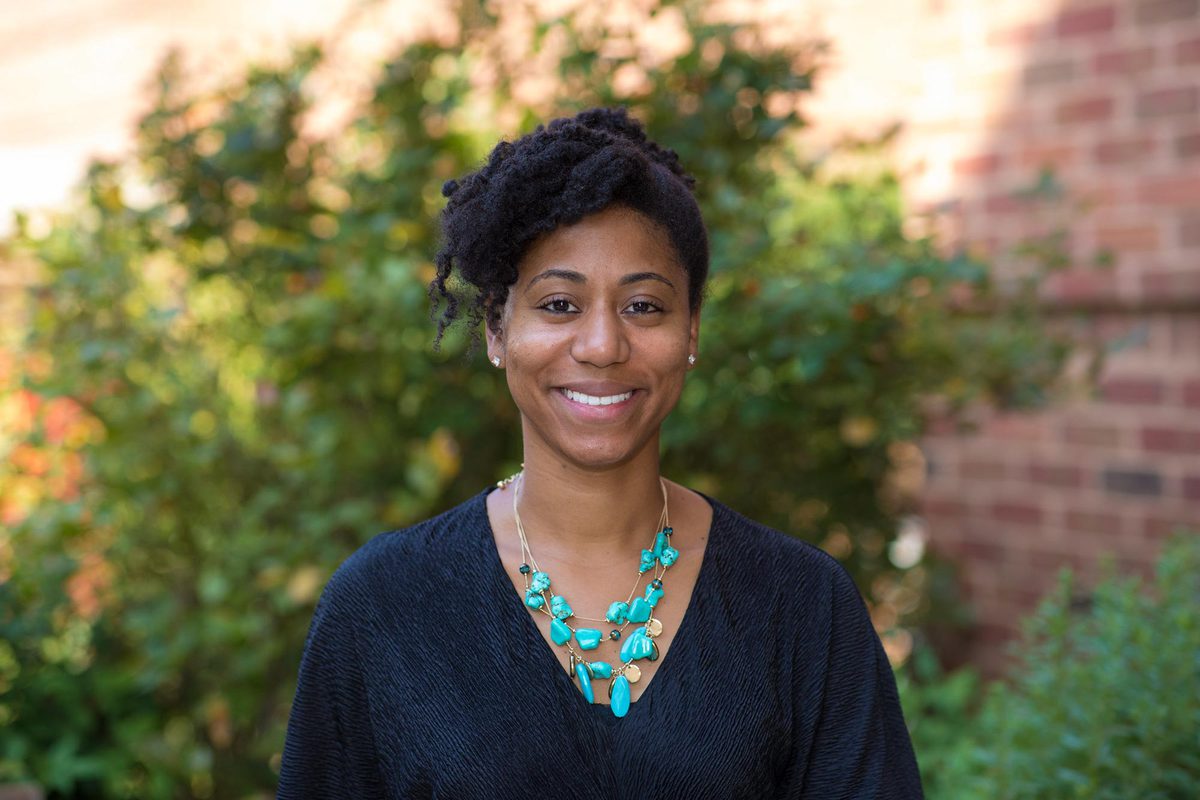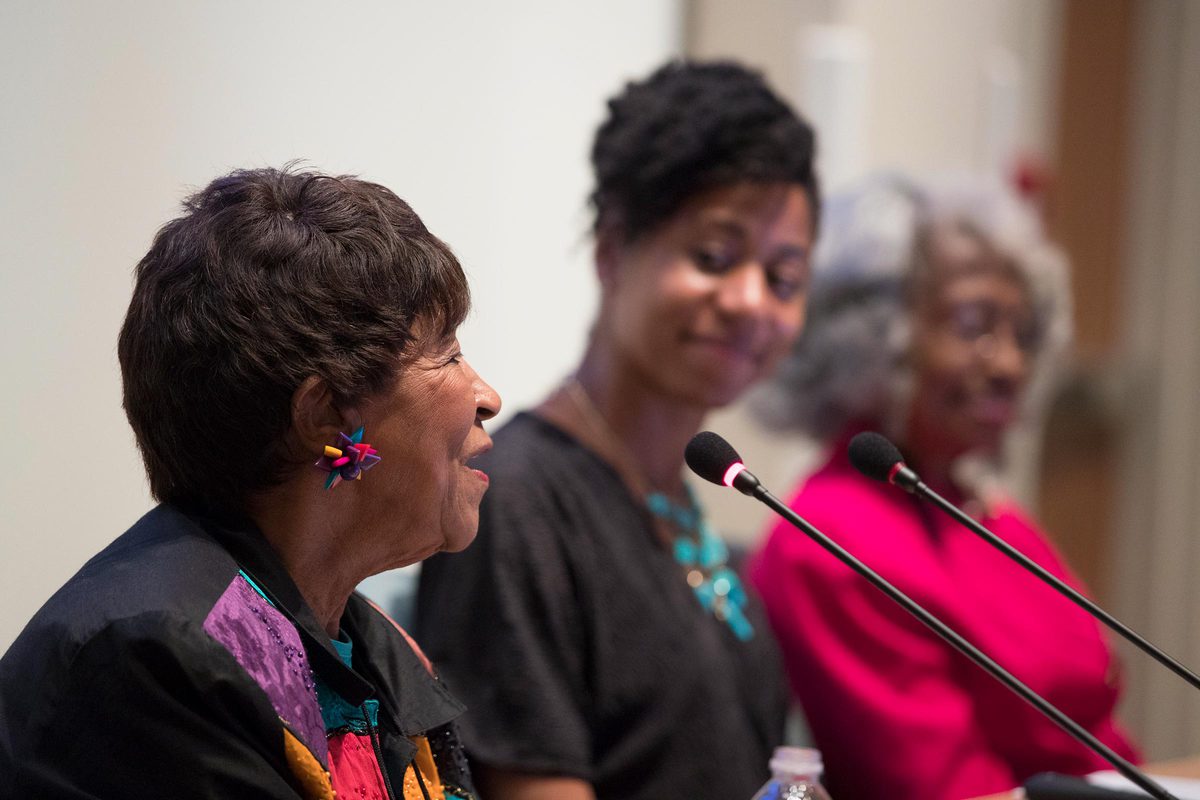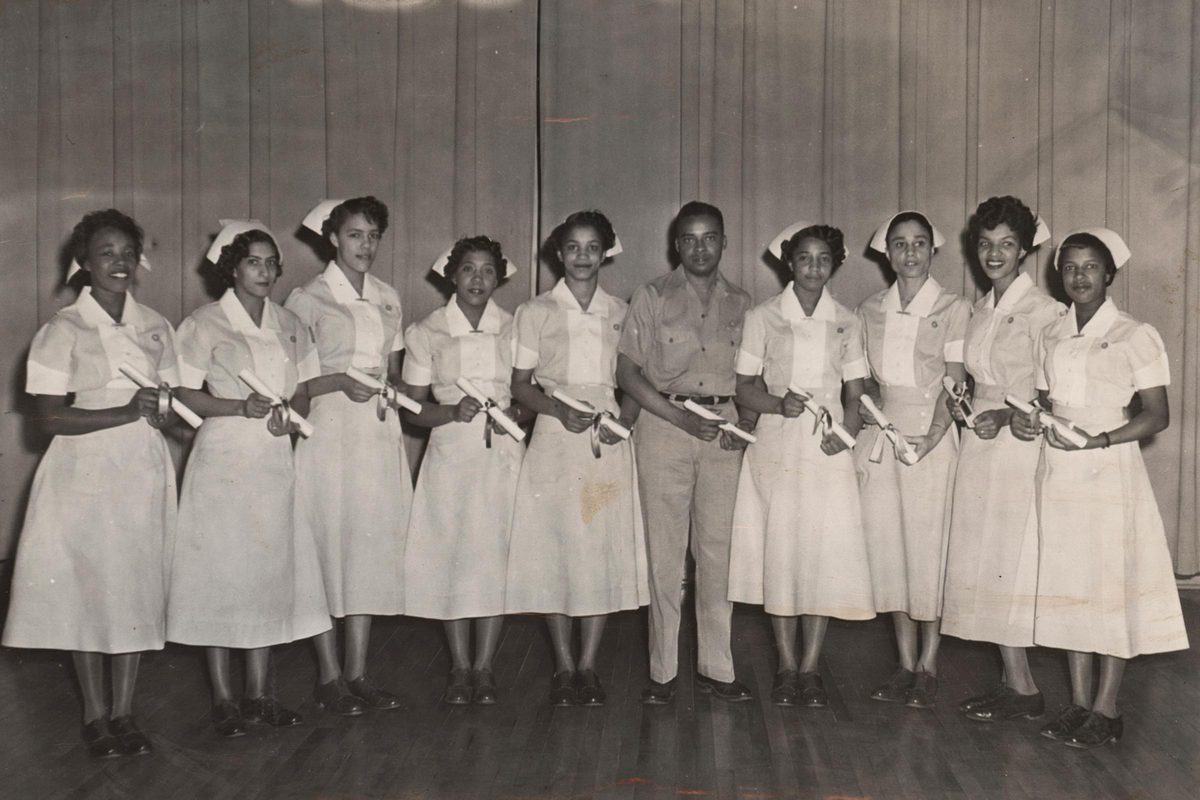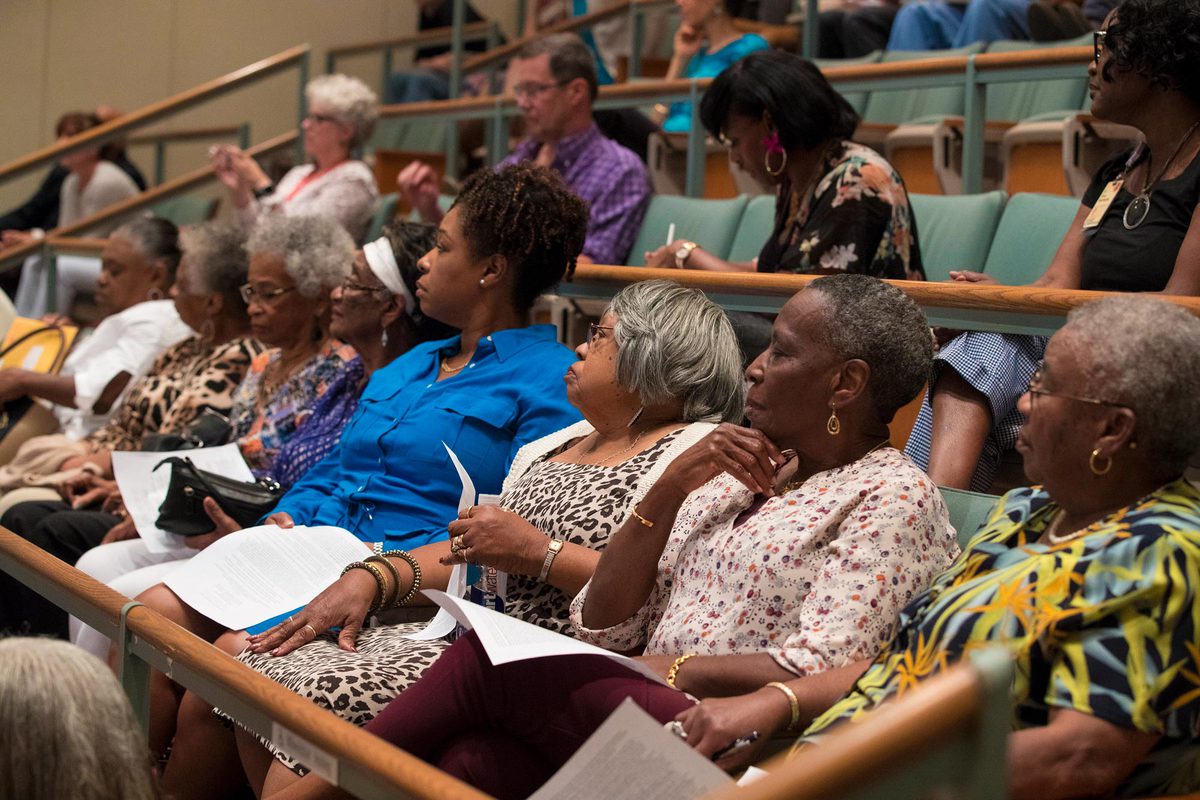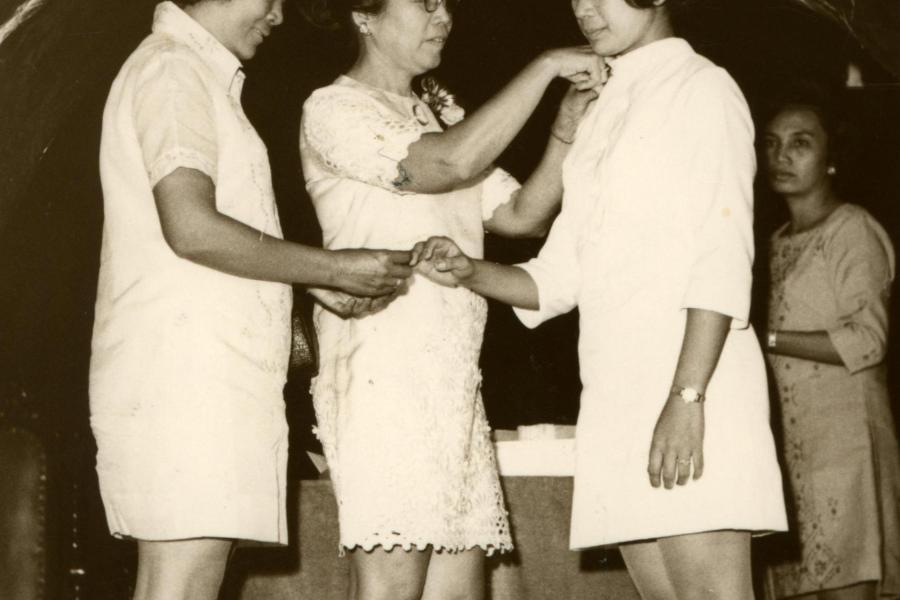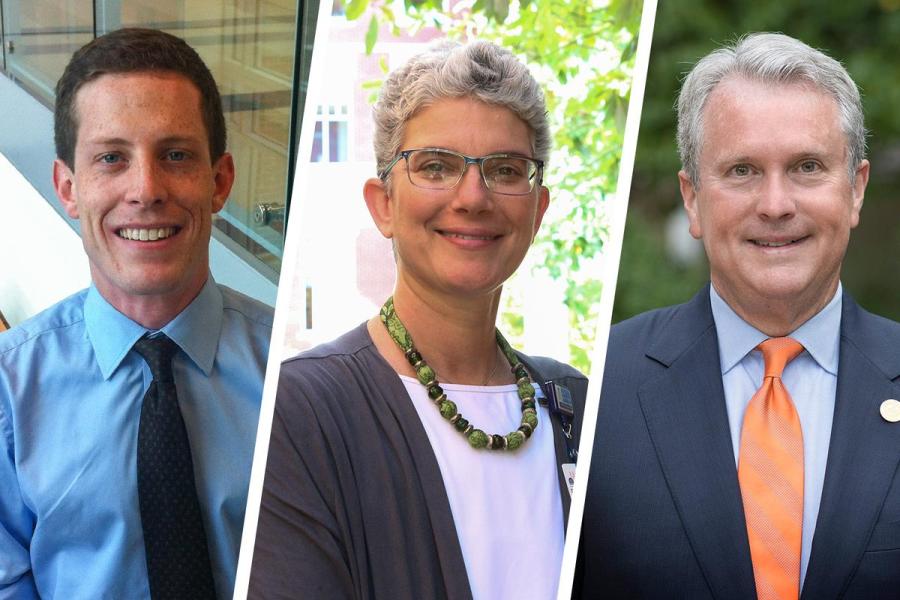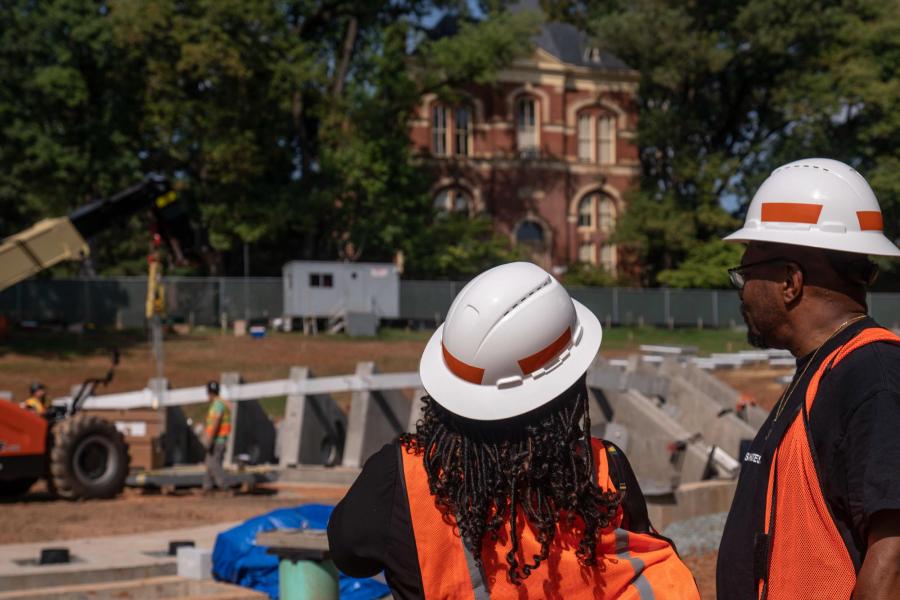Among several jobs she had over her career, Harris worked for the Children and Youth Center, a group of health clinics that served children from infancy to age 18. She later worked as a school nurse in all the local elementary schools before a nurse was hired for each school. She then went back to working in the UVA Hospital in hospice care. She officially retired from the hospital in 1991, but still helps families with hospice care.
Gardner said she learned about hard work and resilience while working on the family farm in Williamston, North Carolina. She moved to Charlottesville, where her aunt lived, for the LPN program. Her sister, Ida Woodfolk Rogers, had gone through the program two years before her.
After Gardner had worked in the UVA Hospital’s neurology unit for six years, she was asked to set up and run an outpatient neurology clinic. She started with three rooms. When the new residents arrived, Gardner was the one who lectured them on how the clinic was run.
“We’re all called to serve in some way,” she said. “Compassion – that’s what all patients need.”
Lost and Found
When friends Louella Jackson Walker, who graduated from the LPN program in 1958, and Mary Jones, a ’61 grad, went to a yard sale after their former teacher, Lucy Johnson, had died, they found photos of the LPN nursing program and lent them to the UVA School of Nursing. It took 20 years and a new perspective to pay attention to this group of professionals.
“Apparently, Mrs. Walker loaned the photos to the history center many years ago, and they were filed away,” Wall said. “Last year, one of our program managers found them and returned them to Mrs. Walker. I visited Mrs. Walker in her home a few days later (and Mrs. Jones was there), and that is when we started talking about their program and realized that they were alumni, too.”
Walker, who retired in 2010 from the UVA Cancer Center and still helps elderly patients, said it felt great to be recognized after so much time had gone by.
Jones agreed: “It’s wonderful to be remembered and for people to know you stood for something and helped mankind. I enjoyed being a nurse.” Her grandfather had been a janitor at UVA.
Jones, who grew up in Greenwood, one of eight children, loved school and her teachers, she said, adding that she did her homework by the woodstove. “We might not have had material things, but I had knowledge,” she said.
After Burley High closed in 1967 (it reopened as a middle school in 1973), UVA Hospital continued the LPN program until the1980s.
When the team in the nursing history center began this project several years ago, UVA alumna Margot Lee Shetterly’s book “Hidden Figures,” and the resulting feature film, were taking the media and popular culture by storm.
“‘Hidden Figures’ provided additional inspiration and accountability to reflect on our own institution’s history and the vast contributors of the nursing program,” Tucker said. Hence, the nursing display was called “Hidden No More.”
As Tucker and others have heard, however, “hidden” really is misleading in this case.
“The nurses weren’t hidden, as the patients and community have known; they were always here,” Tucker said. “They paved the way for me to be at the Nursing School.”
